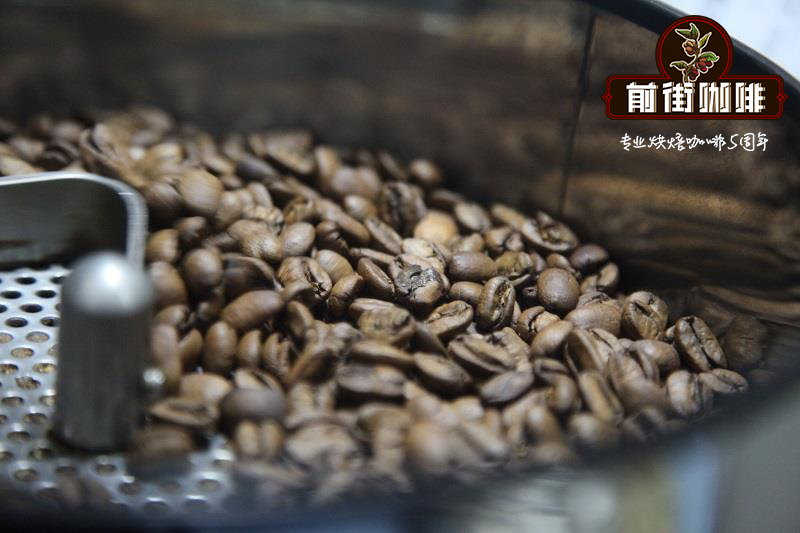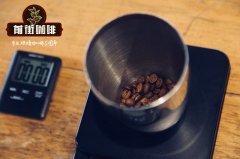Description of the characteristics and Flavor of Brazilian Red Bourbon Coffee Bean varieties

Professional coffee knowledge exchange more coffee bean information please follow the coffee workshop (Wechat official account cafe_style)
Brazilian coffee beans
Brazil is the most important coffee producing area in the world, accounting for 1x3 of the world's total output. Brazil has 10 states that produce coffee beans. Due to differences in region and climate, the quality of coffee beans is inevitably different. Therefore, Brazilian coffee beans are divided into many grades! Brazilian coffee is medium-fragrant, sour and mellow, has a mild bitter taste and is famous for its smooth taste. Among all kinds of Brazilian coffee varieties, Santos Coffee is more famous. Santos Coffee can also be called Bourbon Santos. Bourbon Santos is of good quality and has a round taste with moderate acidity and strong sweetness. Bourbon Santos is considered to be an indispensable ingredient for mixed coffee.
Colombia
Colombia is the second largest coffee producer in the world, accounting for 12% of the world's total output, second only to Brazil and the largest producer of Colombian Mild. Colombian coffee trees are planted in the highlands and have a small cultivated area in order to take care of harvesting. The harvested coffee beans are refined with water washing (wet method). Colombian coffee beans are of neat quality and can be called the standard beans among coffee beans. Colombian coffee beans are large in shape, light green, with a special thick flavor, and are widely favored for their rich and unique aroma. The taste is sweet in acid and low in bitterness, which can lead to multi-level flavor depending on the degree of baking. Medium baking gives full play to the sweetness of beans, with mellow acidity and bitterness; deep baking increases bitterness, but the sweetness still doesn't disappear much. Generally speaking, medium-deep roasting will make the taste more personalized, not only as a single drink, but also suitable for mixed coffee.
Manning
Indonesia is a big coffee producer. Coffee is mainly produced in Java, Sumatra and Sulawi, with ROBUSTA species accounting for 90% of the total production. Manning is one of the few Arbica species. The granule of Mantenin is large, the bean quality is very hard, and the rate of defects in the planting process is on the high side, which is usually selected manually after harvest. If the control process is not strict enough, it is easy to cause a mixture of good and bad quality, and different baking degrees also directly affect the taste. Therefore, it has become a more controversial single product. Before Blue Mountain was discovered, Manning was regarded as the best coffee because of its rich and mellow taste, not astringent but not sour, mellow and bitter; moderate roasting will leave a moderate sour taste and unique flavor; if the roasting is too shallow, it will be powdery and astringent.
Blue Mountain
Blue Mountain Coffee is produced in the Blue Mountains of western Jamaica, hence its name. Blue Mountain is a mountain range with an elevation of 2256 meters. Coffee trees are planted on a steep hillside about 1000 meters above sea level. The annual output of Blue Mountain Coffee is only about 700 tons. Blue Mountain coffee beans are full in shape and slightly bigger than ordinary beans. Sour, fragrant, mellow, sweet taste is uniform and strong, slightly bitter taste, harmonious taste, excellent flavor, suitable for individual coffee. Due to low production, most of the products on the market are "special blue mountains", that is, mixed coffee with other coffee beans at the bottom of the blue mountains (flavor blue mountains).
Peru
Peruvian coffee, a rising star, is gradually opening up its popularity and entering the world. It is mostly planted in high-altitude areas, the planned planting makes the yield greatly increased, the taste mellow, the right acidity, more and more people like it.
Kona, Hawaii
Hawaiian coffee beans are grown on volcanic terrain. At the same time, there is a high density of artificial farming, so each bean can be said to be spoiled, the price is naturally expensive, second only to the Blue Mountains. Hawaiian Kona beans are evenly shaped and have a strong sour and sweet taste. The palate is moist and smooth. Moderate baking makes beans sour, while deep baking aggravates both bitterness and mellow taste. This coffee bean grows from sea level to 6000 feet. Gourmet coffee generally grows only in mountain areas, growing at a height of about 4000 to 6000 feet requires annual rainfall of about 80 feet and is obvious in dry and wet seasons. The soil for growing gourmet coffee beans should be very fertile and usually have volcanic rock, and light cloudy or cloudy weather is also necessary in the growing environment of high-quality coffee beans. The daytime temperature needs 15-20 °C. This climate results in a longer growth process, a unique growth and climatic environment that leads to a stronger coffee flavor.
Important Notice :
前街咖啡 FrontStreet Coffee has moved to new addredd:
FrontStreet Coffee Address: 315,Donghua East Road,GuangZhou
Tel:020 38364473
- Prev

Single coffee is a kind of "stick to" single coffee beans. What are the ways to drink them? how to drink them?
Professional coffee knowledge exchange more coffee bean information Please pay attention to coffee workshop (Wechat official account cafe_style) Coffee is a daily drink for many people. Recently, more and more people can taste the quality of coffee, and they are more and more fastidious. Whether you are using caffeine to wake up your head, or tasting the flavor of coffee, coffee has played an important role in our lives.
- Next

Would you like a single coffee bean or a formula bean? Which tastes better, single beans or mixed coffee beans?
Professional coffee knowledge exchange more coffee bean information please follow the coffee workshop (Wechat official account cafe_style) coffee single beans or mixed beans which is better? Generally speaking, coffee has a variety of charming charm, delicious and their own preferences have something to do with, so it is important to understand the characteristics of coffee. Individual coffee can best show the unique producing area personality of coffee beans, due to the country
Related
- Detailed explanation of Jadeite planting Land in Panamanian Jadeite Manor introduction to the grading system of Jadeite competitive bidding, Red bid, Green bid and Rose Summer
- Story of Coffee planting in Brenka region of Costa Rica Stonehenge Manor anaerobic heavy honey treatment of flavor mouth
- What's on the barrel of Blue Mountain Coffee beans?
- Can American coffee also pull flowers? How to use hot American style to pull out a good-looking pattern?
- Can you make a cold extract with coffee beans? What is the right proportion for cold-extracted coffee formula?
- Indonesian PWN Gold Mandrine Coffee Origin Features Flavor How to Chong? Mandolin coffee is American.
- A brief introduction to the flavor characteristics of Brazilian yellow bourbon coffee beans
- What is the effect of different water quality on the flavor of cold-extracted coffee? What kind of water is best for brewing coffee?
- Why do you think of Rose Summer whenever you mention Panamanian coffee?
- Introduction to the characteristics of authentic blue mountain coffee bean producing areas? What is the CIB Coffee Authority in Jamaica?

